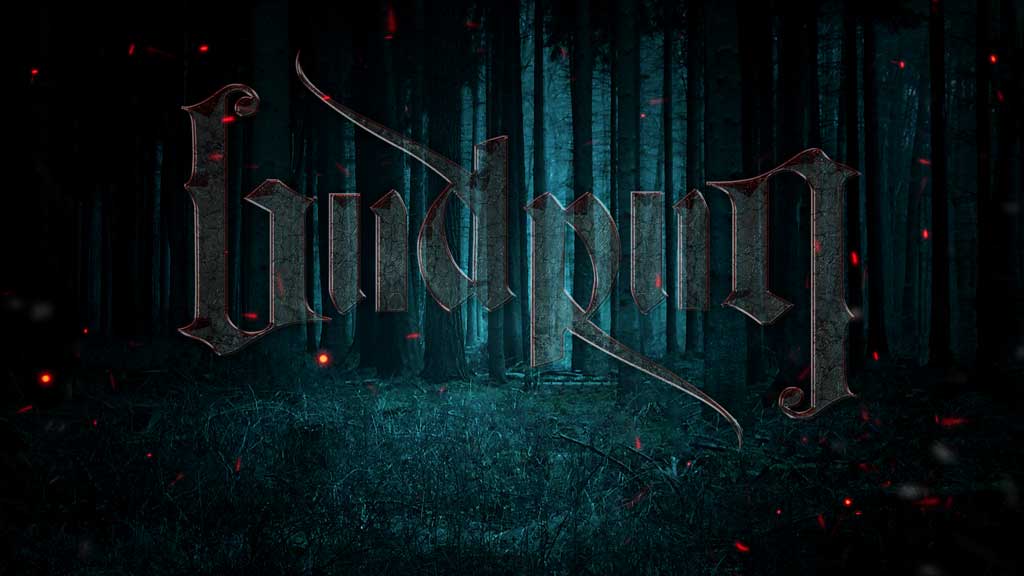The German forest is immense, vast, dense, dark, and impenetrable. It is the refuge of the exiled and of outlaws. A site of lairs for terrifying and often monstrous animals. The dwelling place for brigands and marginal individuals. The woods thereby forms a natural frontier.
The Bohemian Forest (or Nemus Boemicum) to the south connects with the Bavarian Forest and the Austrian Nordwald; the forest of Falster separates Denmark from Saxony and has always been a singular place.
Teutoburg
It was in the Teutoburg Forest that the Roman Legions of Varus were annihilated by the Cherusci leader Hermann, in the year 9 CE. Legendary and mythical forests are also plentiful: there is the Myrkviðr of the Norse texts; the Eydaskóg of Haralds saga, which separates the Värmland (Wormia in Latin) from Götaland; and the Saga of Dietrich von Bern speaks of the Valslöng, the frontier between West Francia and Hunaland and also of Borgar or Borg, which lies on the edge of Saxony.
They sometimes carry descriptive names like the Tröllaskógr, “Trolls’ Forest,” mentioned in Njal’s saga. This is the site of crimes and murders. The Þiðreks saga tells us that the mother of Siegfried, betrayed by Duke Artvin and Duke Hermann, was taken into the Swabian forest to be executed. In the Nibelungenlied, Hagen kills Siegfried in the Odenwald, “Odin’s Forest.”

Otto Rahn once wrote that: “Around Herkersdorf there stretches out this immense forest region, given the name of Sylva Orcynia (Orcynian forest) by the geographers of Antiquity and Sylva Hercynia (Hercynian forest) by Caesar. Beginning at the source of the Theiss, it spreads northwards, crossing Westphalia and Harz.
Then it follows the Rhine of Schaffhausen as far as Spire (Speyer). The Greeks and Romans believed that, in this forest known as Orcus or Hercyna, Orcus, the guardian of the kingdom of the dead, and the Earth Mother Demeter-Hercyna reigned.
Lady Hel
They said that men of their blood came from here, and that one day they would return there. The forest was the temple of the goddess, with trees for columns and the sky for a roof. The Germans knew their goddess of death by an analogous name: Herka, Hel or Holda. This goddess’ function was not in the least frightening to them: she was good and enabled the trees, leaves, flowers and fruits grow in the earth up towards the sun and men. It is for this reason that the Greeks believed the first man was issued from a tree, whose roots plunged down as far as the kingdom of Lady Hel.”
Sacred grove
 The forest is a sanctified location and philologists have long noted that all the words for temple in the oldest texts can mean “sacred grove or forest.”
The forest is a sanctified location and philologists have long noted that all the words for temple in the oldest texts can mean “sacred grove or forest.”
Many place-names support this conclusion: Wihinloh (attested in 901), Rimslo in Lower Saxony. Heiligenforst (1065) or Sacrum Nemus (eleventh century) near Haguenau, and Heiligenholtz (1180, Baden-Württemberg).
Fröslanda, Nördlunda, and Ullunda (Sweden) are coined from the names of the gods Freyr, Njörðr, and Ullr. Then we have Torslunda (Denmark), “Thor’s Wood.” The Old Norse word lundr (equivalent to the Old High German lô or lôh) designates a sacred grove.
In the Poetic Edda the god Freyr goes to a “peaceful grove” to meet Gerðr, and the Landnámabók (Book of the Settlement of Iceland), written down between 1275 and 1280, notes that Þórir snepill Ketilsson, the settler of Hnjóskadalr, made a sacrifice in a lundr.
Oak trees
Around the year 1220, Oliverus Scholerus indicates that the Pruthenes, ancient Prussians worshipped forest and river nymphs. And in the middle of the fifteenth century Jerome of Prague stated that they “revered the woods sacred to demons,” especially the oldest oak trees.
The worship of trees is well confirmed among the Saxons. They consecrated the groves and forests. Those tribes gave the woods the names of their gods and attaching an eminent dignity to these places.
It was especially the leafy trees and the springs that they found worthy of worship,” reports Adam von Bremen in the eleventh century.
Grove of the Semnones
Tacitus mentions the sacred grove of the Semnones that no one can enter unbound.
At a set time all the peoples who share that name and bloodline assemble through envoys in a wood hallowed by the auguries of their ancestors and the awe of ages.
The public sacrifice of a human victim marks the grisly opening of their savage ritual. The Naharnavali performed an extremely ancient worship. Their master is a priest in woman’s dress. from Germania.
Is it a coincidence that the Poetic Edda mentions a Fjöturlundr? A forest where Odin lends his spear to Dagr, who uses it to impale Helgi?
It should come as no surprise to see in chapter 21 of the Saga of the Jómsvíkings, written around 1200, that when the jarl Hakon confronted the Jómsborg Vikings and the battle turned against him, he went up on the island of Primsigned, and away into a forest.
There he fell on his knees and prayed, looking northward. In his prayer he called upon his patron goddess, Thorgerdr Holgabrúð… Next he offered her a human sacrifice.
Dark forest
The Eddas mention Myrkviðr, the “Dark Forest,” as being located at the borders of the world of the gods, which it separates from the world of the giants.
Originally, in a historical sense, this was quite likely the forest separating the Goths and the Huns. In the legend of Wayland the Smith, the swan maidens come from here.
In his History of the Danes (III, 2, 4–3, 3, 6), written between 1210 and 1220, Saxo Grammaticus tells us that Hotherus became lost in a forest and met supernatural women. He describes them valkyries. Women who controlled wars and secretly aided their favorites. They could grant victory or inflict defeat as they pleased.

They give him a coat that makes him invulnerable, and after this their abode vanishes. A short while later Hotherus comes across these same women again while crossing through an uninhabited forest; he discovers a cave in which these “nymphs” dwell, and they share their counsel with him.
Scandinavia folk belief populates the forests with wood maidens (skogsnufva, skogsjungfru). And also land spirits corresponding to the Roman spirits and to the spirit called skogsrå. That’s how they call them in Sweden and Norway.
In Germany we have dwarves, wood maidens “holzvrowe”, “wood weepers” (holzmuowe), Holzmuoia. Furthermore spirits named Waltschrate that have become conflated with dwarves. And even giants with names like Rumedenwalt, Schellenwalt , and Vellenwalt … The Germanic forests are truely a mysterious place …
Excellent read:

Lyrics and Music by Heilung – Like it? Buy it https://amzn.to/34C69ZU
![]()




